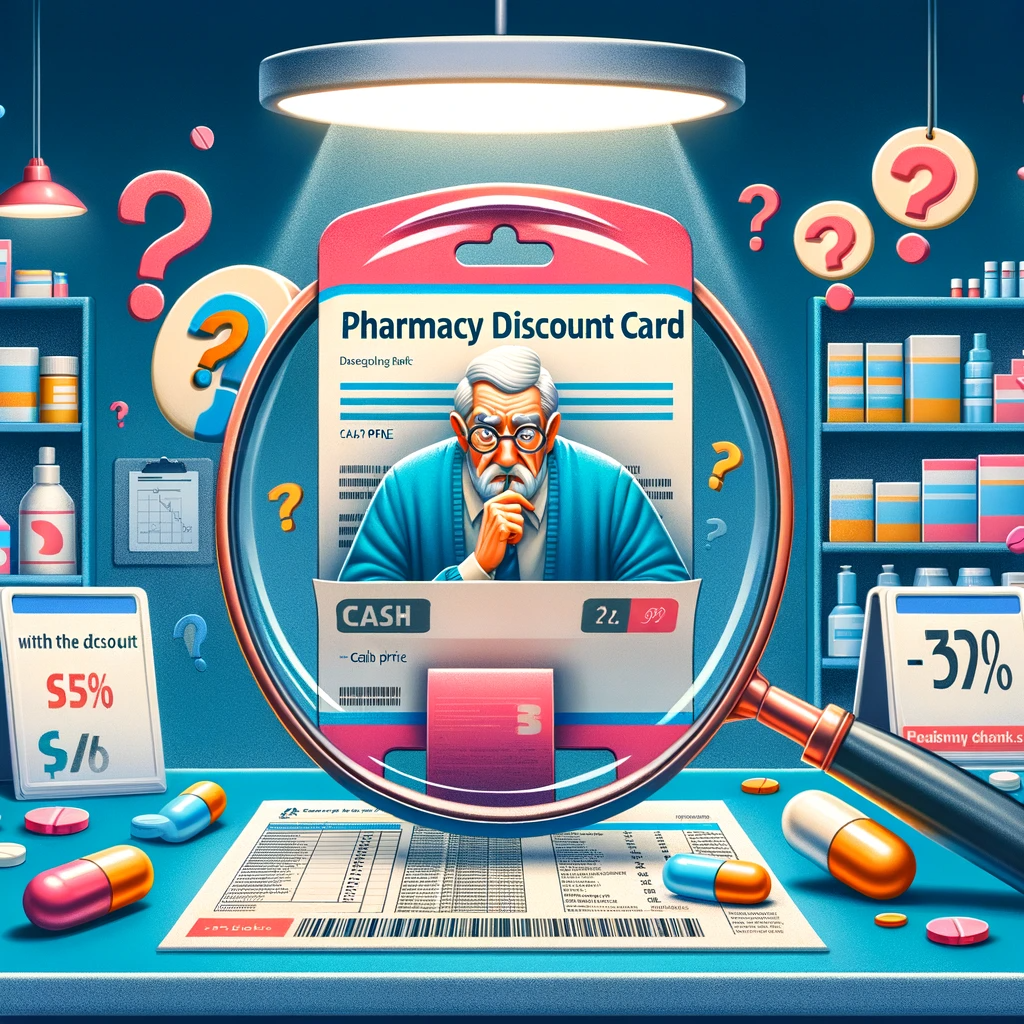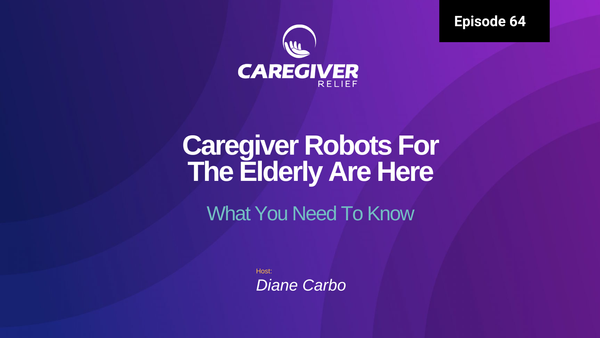The Struggle of Seniors with Medication Costs - The Role of Medicare and Emerging Solutions
A recent study has shed light on a concerning trend among U.S. seniors. Despite being insured by Medicare, many are skipping or stretching their prescription medications due to costs. This has been going on for decades

Welcome! Today, I want to discuss a critical issue affecting millions of seniors - the daunting challenge of affording medications. I realize this is an issue for many young people as well. I want to explore the complexities of Medicare, Medicare Advantage and the harsh reality of prescription costs. I also have an emerging solution.
I have some very startling statistics:
A recent study has shed light on a concerning trend among U.S. seniors. Despite being insured by Medicare, many are skipping or stretching their prescription medications due to costs. Let's delve into the details.
Study on Seniors and Medications
In a survey of over 2,000 seniors aged 65 and older, it was found that roughly 20% are taking less medication than prescribed, or not taking medication at all, because of cost. This alarming figure highlights the growing issue of medication affordability even among the insured elderly population.
The study, led by health policy professor Stacie Dusetzina from Vanderbilt University, also revealed that seniors are eager to discuss medication costs with their doctors. In fact, nearly 90% would appreciate a tool used by doctors to estimate medication prices, though concerns remain about the accuracy of these estimates.
I was not surprised to learn that seniors are not taking their medications as directed. I have worked with many seniors for many decades. It has been an ongoing issue for decades. Our government policy makers were aware of these issues and they have ignored them.
When seniors hit the dreaded donut hole and have to pay out of pocket for their medications. Many choose to do without their meds.
The high cost of drugs is often linked to copays and out-of-pocket expenses. This isn't just a problem for the elderly; people of all ages, including those with private insurance, face similar challenges. Especially for new, patented drugs, and even some generics, out-of-pocket costs can be prohibitive.
Though programs exist to help lower these costs, including Medicare programs and initiatives by private companies and drug manufacturers, the solution might require a more fundamental shift. As Dr. Adam Gaffney from Harvard Medical School points out, a cultural change towards making all drugs free is essential for systemic reform. I will address the way you can get your medications free.
The struggle is real, but so is the call for change. There's a growing recognition that healthcare, including medication, should be a right, not a privilege. This study is a stark reminder of the need for comprehensive reform in our healthcare system. I have seen our health care deteriorate.
Let me explain how we have gotten here.
In the United States, nearly one in ten new prescriptions, totaling 55 million, were never picked up in 2020. The primary culprit? The high cost of medications, a phenomenon known as prescription abandonment.
In the year before the pandemic, 13 million Americans faced a dire choice: forgo their medications due to exorbitant costs. This isn't just a statistic; it's a nationwide crisis calling for urgent, affordable healthcare solutions.
As a nurse with over five decades of experience, I've seen the struggle firsthand. Seniors juggle between paying for medications and avoiding the dreaded Medicare donut hole. The tactics vary – from ask the doctor to double the amount of pills they are prescribed. Then taking only half the prescribed dosage. This is to stretch their medications to avoid the dreaded donut hole.
Many stop taking their medications and the consequences are often dire, leading to hospitalizations and even preventable deaths. I in fact studies show there are 125,000 preventable deaths in the US because of seniors stop taking their heart meds, insulin or blood pressure medications.
I want to explain why this has been going on for so long, and why.
One of the significant factors in this complex scenario is the non-interference clause in Medicare. Established under the Medicare Prescription Drug, Improvement, and Modernization Act of 2003, this clause prohibits Medicare from negotiating drug prices directly with pharmaceutical companies. The rationale was that competition among private Medicare Part D plans would lower prices. However, this hasn’t always led to cost-effective solutions for patients. Just like Obamacare did not lower health care costs. It created a billion dollar insurance business of gate keepers – denying, delaying and rationing care. The high deductibles, the cost sharing with high copays and out of pocket expenses is meant to deter the use of the benefits. Now let me explain about why drug costs of increased.

What are Pharmacy Benefits Managers?
Pharmacy Benefit Managers, or PBMs, play a pivotal role here. They act as intermediaries between insurers and pharmacies, negotiating drug prices. However, their role has become controversial. Critics argue that PBMs contribute to high drug prices through complex rebate arrangements and lack of transparency, affecting what patients ultimately pay at the pharmacy.The pharmacy industry has no transparency. There is no regular cost schedule. That is why you can get such varying prices for the very same medication.
Unlike many other countries, the U.S. lacks standardized pricing for medications. This leads to inconsistent and often exorbitant costs for the same drugs. Various factors, including patent laws, market exclusivity, and the influence of Pharmacy Benefits Managers, contribute to this inconsistency. As a result, Americans often face higher drug prices compared to other countries.
Did you know that 30 years ago – medications were only a few pennies for every health care dollar spent. Today, that has increased to 35%. What has happened and what changed. The only thing that has changed is corporate greed.
Prescription Abandonment
The high rate of prescription abandonment, often due to cost, has broader implications for patient health and overall healthcare spending. It’s essential to understand that this is not just an individual issue but a systemic one. As a society, we need to advocate for policy changes that promotes increased transparency in drug pricing, and hold PBMs accountable.
My Personal Experience with Medications
I want to share my personal journey with medication costs has been eye-opening. Years ago, a medication costing me $500 a month under workers' compensation. When I was discharged off workers compensation, the medication cost was suddenly just $5 out-of-pocket for me. The disparity was shocking, a clear indicator of the greed within the Pharmacy Benefit Managers' (PBM) system.
Fast forward to my experience with Medicare. A change in medication led me to the dreaded donut hole. The cost for this med, duloxetine , was going to be $700 a month. Even with discount cards, the price remained unaffordable at $500 a month. Like many, seniors before me, I made the tough decision to stop the medication. Let me tell you I was fully aware of the painful withdrawal symptoms that would
Withdrawal from SSRIs can be brutal. Symptoms ranging from flu-like signs to psychological and sensory disturbances. It's a harsh reality for those abruptly stopping medications due to cost.

But what about pharmacy discount cards?
They promise savings, yet often fall short. Investigations have shown that some customers end up paying more than the cash price. These cards, while marketed as helpful, may not always offer the best deals due to hidden costs and kickbacks. There are pharmacy discount cards that are not worth the paper they are printed on. I have had several clients tell me, they were expecting to pay one price , as seen on the discount card. Once they got to the pharmacy to pick up the medication, they were told a very different price. It a bait and switch.
I also want to address The new Medicare rule allowing for the negotiation of all medications marks a significant shift in healthcare policy in the United States. According to the U.S. Department of Health and Human Services (HHS), starting in 2023, Medicare began the process of negotiating directly with drug manufacturers to lower the prices of high-cost prescription drugs.
This initiative is part of the implementation of the Inflation Reduction Act (IRA), which aims to reduce healthcare costs for seniors and people with disabilities. First let me tell you I am not impressed with this law at all. It gives the impression the government is doing something to address the high cost of medications. Let me put things into perspective for you. There are over 32, 000 generic medications. I repeat, 32, 000. So when I learned that our government policy makers we starting with 10 medications, I was angry , not impressed. At that rate, we will all be dead before any meaningful cut in medication costs comes through.
The first 10 drugs selected for negotiation by Medicare were announced in September 1, 2023. These negotiations are set to occur during 2023 and 2024, with the negotiated prices becoming effective in 2026. It is going to take 3 years for the government implement cost cuts to 10 drugs. Spare me.
In response to this new rule, the Centers for Medicare & Medicaid Services (CMS) have released revised guidance on how the negotiation process will be conducted. This guidance includes details on selecting drugs for negotiation and outlines the considerations CMS will take into account during the negotiation process. These considerations include the clinical benefits of the drugs, their role in fulfilling unmet medical needs, and their impact on Medicare beneficiaries, among other factors.
The pharmacy industry's response to this new rule is varied. Pharmaceutical companies have historically opposed such measures, citing concerns about their impact on profits and the potential to hinder investment in research and development. However, the government's stance is that this move will enhance access to life-saving drugs at more affordable prices, thereby improving public health outcomes. Am saying that as I roll my eyes. I’m sorry. This is just insulting to me, as a healthcare consumer.
You can check out more detailed information about the Medicare Drug Price Negotiation Program, you can visit the official CMS website.
There is, however, a glimmer of hope. MyFreePharmacyPlan.org offers a different approach - a flat fee membership for prescription drugs, akin to Netflix's model. This could be a game-changer, especially for those with chronic conditions like diabetes. In fact, when I read that Dr. Adam Gaffney from Harvard Medical School pointed out, a cultural change towards making all drugs free is essential for systemic reform. And I am excited to share with you I have solution that is just what the doctor ordered.
We don’t have to wait for the government to take care of the issue of high costs of medications. The best part of the US is the private sector steps up when they see a need and try to provide a solution.
The journey to affordable healthcare is ongoing. While we wait for policy changes, initiatives like MyFreePharmacyPlan.org offer immediate relief. It's about empowering you to prioritize your health without the burden of unmanageable costs. This revolutionary approach will forever change the way we purchase medications.
This flat fee pharmacy is an innovative program designed to help uninsured and underinsured individuals access medications at significantly reduced costs or even for free. This initiative was created to combat the rising prices of prescription drugs and ensure that people do not have to choose between their health and other essential needs.
Here's how the plan works:
Membership Subscription: Individuals sign up for a monthly membership, similar to joining a gym or Netflix. This membership provides access to the program's medications.
Extensive Medication List: Members can search MyFreePharmacyPlan.org list of over 800 generic medications, which covers a wide range of commonly prescribed drugs for various health conditions. They have identified 90% of the most regularly prescribed medications and have made them free for one flat fee.
That is why I see the 10 medications and 3 years before they implement the change makes me yawn. It gives the perception the government is going to help us, when in fact, they want to delay the decrease in the profits for the Pharmacy Benefits Managers. They have huge lobbying teams that are support our government policy makers and ignore the needs of the US citizens that elected them. Trust me, the harm they have caused to seniors and the underinsured, is devastating.
Pharmacy Coaching: The program offers pharmacy coaching, where a team of professionals assists members in reviewing their medications and ensuring they are included in the program or finding therapeutically similar alternatives.
Prescription Transfer and Confirmation: Members can transfer their prescriptions to MyFreePharmacyPlan.org or their doctor can e-prescribe directly to the service. The pharmacy team handles the transfer process and confirms the order with the member.
Medication Delivery: Chronic medications are shipped directly to the member's home for free, simplifying the process and ensuring accessibility.
Costs and Savings: The program targets generic medications, offering them at no additional cost to the member beyond the monthly subscription fee. For those taking brand-name drugs, the program's pharmacists can help find equivalent generic drugs or provide brand-name medications at contracted costs. Over-the-counter medications are also offered at discounted prices.
Immediate Activation: Members can start using the benefits immediately for mail-order prescriptions, and within 24 hours for retail after signing up.
Family Coverage: The plan allows for family member additions, provided they reside at the same address.
Customer Support: The service includes customer support for any inquiries, including medication lookups and education for new customers.
Nationwide Availability: The service is available in all 50 states, broadening its reach and accessibility.
This program is particularly beneficial for those who find it challenging to afford their medications due to high insurance deductibles or lack of insurance coverage, or seniors that want to avoid the dreaded donut hole.
This revolutionary pharmacy plan represents a significant step towards addressing the issue of medication affordability and accessibility in the U.S. It's important to note that this is not an insurance plan but a subscription-based service aimed at reducing medication costs for individuals and families.
For more detailed information and to explore the list of medications covered, you can visit the MyFreePharmacy Plan.org website.
Thank you for joining us. I hope this discussion has shed light on the critical issue of medication costs for seniors and the emerging solutions. Remember, your health is priceless.




